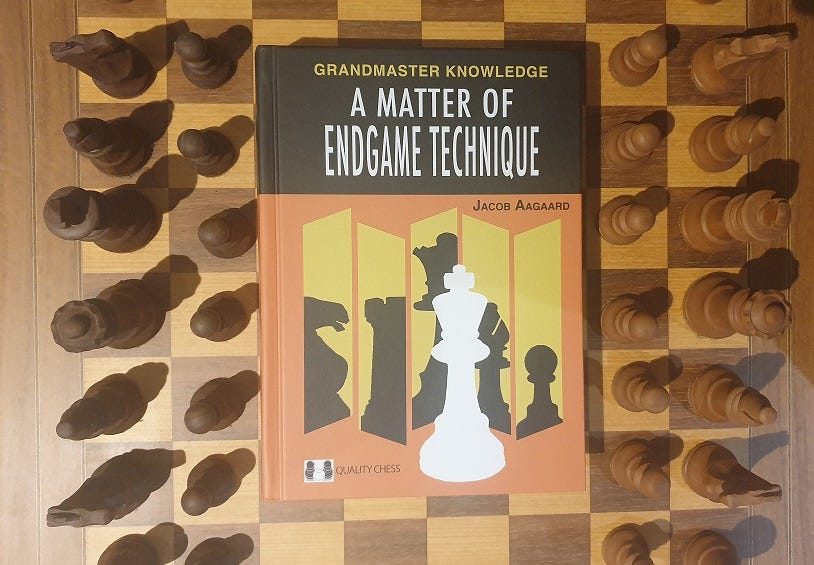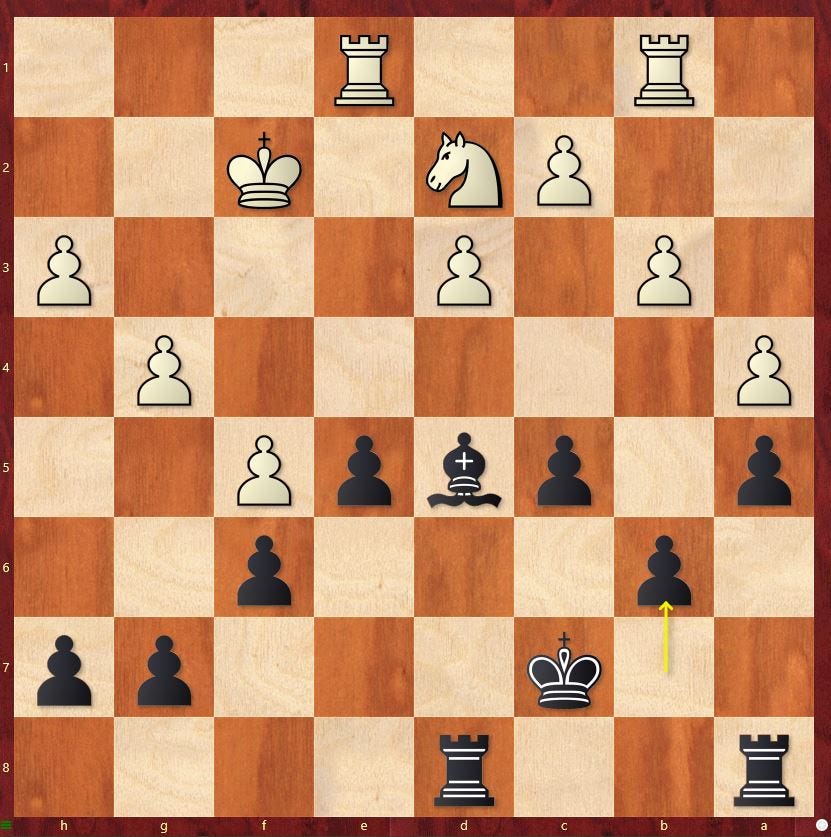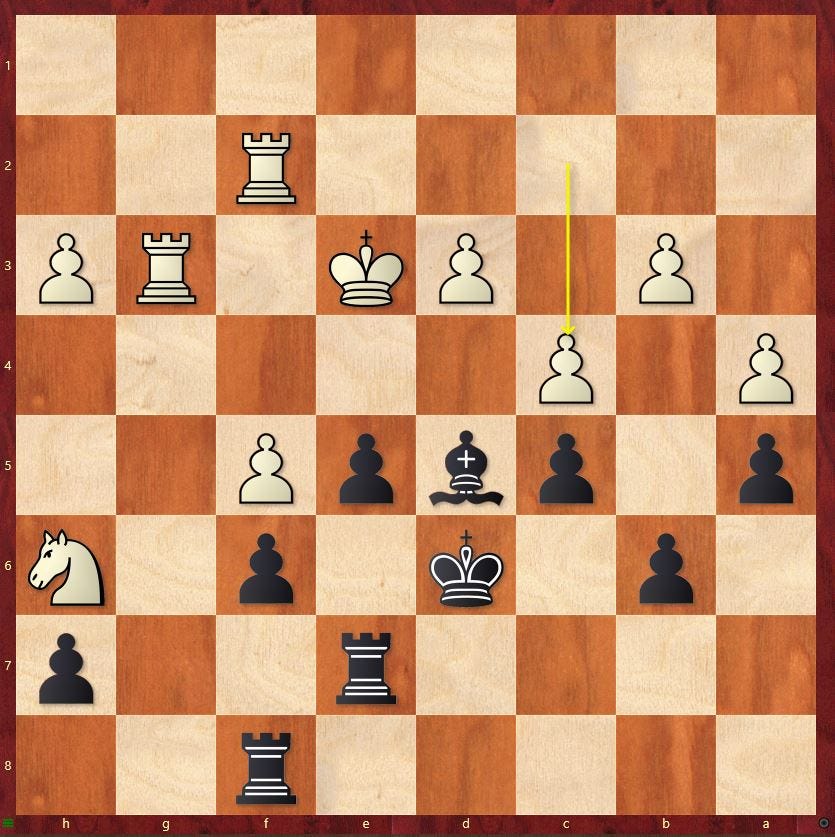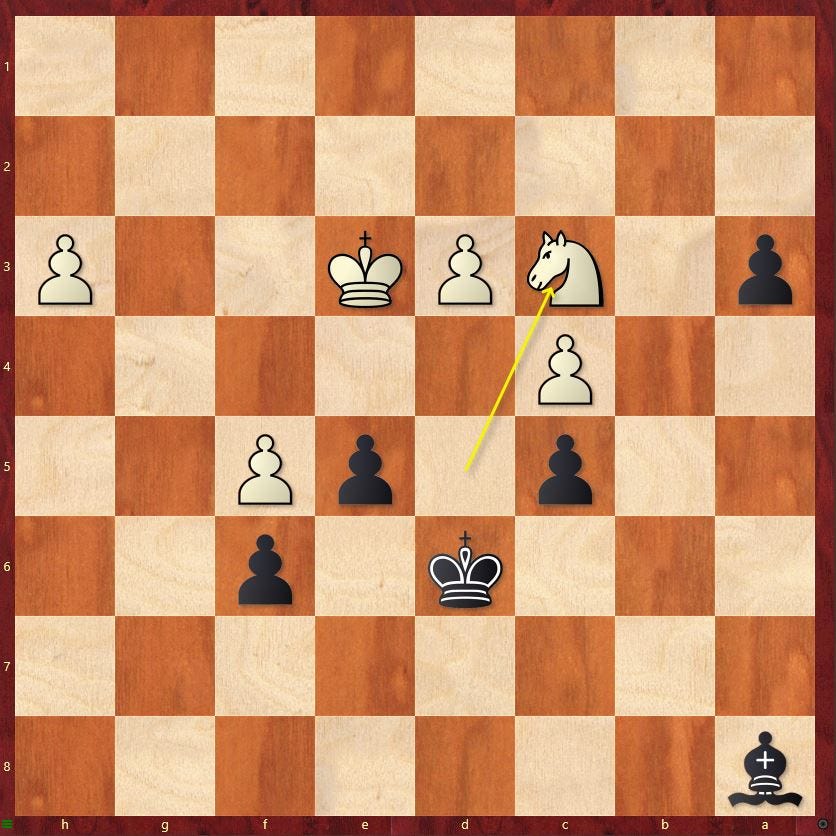Why Don't You Play More Endgames?
What I realised yesterday when I got to play a fascinating final round game
I won a local FIDE-rated tournament over the weekend. Though I was lucky not to lose in Round 3, I was on 5/5 facing a talented, (severely) underrated junior in the last round which turned into a long and absorbing game. This game made me think about endgames in my chess in a new light.
In general, the endgame isn’t as popular as the opening or middlegame
A part of this is because you simply don’t get enough focused practice on the endgame in tournaments. Many of your games are done by the middlegame, or even if you get to the endgame, you have too little time and can’t immerse yourself in it so it’s difficult to gauge if you really like or are good at endgames
Players who like keeping the tension and tend to avoid exchanges (sometimes too much—I am one of them) also miss out on getting enough endgame practice
Some people avoid endgames because they assume that they’re all ‘drawish’. Far from the truth. Sure, some endgames are drawish, but so are some middlegames. When you start playing and studying practical endgames when you have plenty of time to think, you’ll see how much scope there is to create chances
In this day and age, when knowledge and ease of study of openings have improved, being strong in endgames can differentiate you from the pack
As world-renowned coach, GM RB Ramesh said in a Pro Chess Training session in January 2022:
if you’re confident in endgame skills, exchanging often makes sense. Experienced players like doing this—you don’t need an advantage in the endgame if you have belief. You just need some imbalance in the structure or piece configuration etc.
Here’s the final round game from yesterday:
Zhu (1770)–Ikeda (2393), ANU Open (6.1), 30.07.23
1. e4 c5 2. Nf3 d6 3. Bc4
3…Nf6 4. e5 dxe5 5. Nxe5 e6 6. Qe2 Bd6 7. b3 a6 8. a4 Qc7 9. Bb2 Nc6 10. Nxc6 Qxc6 11. O-O Qc7 12. h3 Bd7

13. Na3 Bc6 14. Bd3 Nd5 15. Be4 Be5 16. Bxe5 Qxe5 17. Nc4 Qc7 18. Bxd5 Bxd5 19. Qe5 Qxe5 20. Nxe5

I was pretty happy with this position after the exchanges. I thought White should have fixed Black’s a-pawn (and b-pawn) with a4-a5 at some point before this, so I took my chance to fix White’s pawns with my a-pawn instead.
20…a5 21. Nc4
Another surprise. I was wondering about some variation like 21.c4 Be4 22.d3 trying to force a minor piece exchange and go into a double-rook endgame, when White’s chances seem decent to hold. But I guess there is no need for White to go for such a committal, compromising option as Black would be comfortable there.
Here I was thinking about the contours of the position and what to do:
I want to play …b7-b6 to free up my rook from the a-file, as White’s knight can stay on c4 or always come back there, and pawns on the dark squares would complement my light-squared bishop perfectly
Unless there is some tangible benefit, I want to avoid exchanging the bishop for the knight so I can keep more chances through the imbalance
The bishop has good chances of becoming stronger than the knight as the game develops, especially with White’s queenside pawns on light squares
to support …b6 I want my king on c7 where it isn’t in the way of my bishop or rooks
the queenside is quite locked up; going for …b5 seems nigh impossible for Black as a5 would become too weak, while White attempting pawn breaks there would also result in some weaknesses which my bishop or rooks can target easily
After …b6 and …Kc7, I’ll switch to the kingside and push my pawns there.
I was thinking all of this, and it hit me—endgames (or is this still the late middlegame phase?) are so fun! In navigating relatively ‘quiet’ middlegame positions I’d say I’m average as an IM—in fact I tend to think too much in such positions, often in an inefficient manner, even in 90+30 games over the positional and strategic considerations and get into time trouble—but here, with less pieces on the board, I found more clarity in thought and was really enjoying working out what to do.
The game followed my plan for a little while:
21...Ra6 22. Rfe1 Ke7 23. Rab1 Rd8 24. d3 f6 25. f4 Kd7 26. Kf2 Kc7 27. g4 Raa8 28. f5
Here I couldn’t help but smile. My opponent has put all of his pawns on the same colour as my bishop! Sure, I can’t get to them immediately, but you never know…
28…e5 29. Nd2 b6
My plan has been fulfilled—my pawns on dark squares go well with my bishop, my king is snug and my rooks can move freely—but I hadn’t thought enough about the kingside in my meditations at move 21. I was fixated on where I wanted to put my king and queenside pawns a little too much, so White’s managed to gain a lot of space. During the game I wasn’t worried but later I thought, I should have at least considered moves like …g5 and …h5 earlier. I had considered that the queenside was quite locked, so I should have considered whether I should move my pawns on the kingside before White expanded there, but somehow I didn’t sense its importance. Even as White was advancing, I thought it would only give me more targets in an eventual pawn break by Black (…g6, …h5), but it would have been better to consider whether it was better to also act on the kingside as my queenside manoeuvres couldn’t be prevented anyway.
We shuffle our pieces for a while, each probing for weaknesses but hesitating to take action on the kingside. I completely underestimated how difficult it would be for Black to effectively prepare for and execute, opening things up on the kingside!
30. Ne4 Bc6 31. Re3 Rd4 32. Ke2 Rad8 33. Nc3 Kb7 34. Rf1 R4d7 35. Rg1 Rf7 36. Ke1 Kc8 37. Ne2 Rd6 38. Nc3 Rdd7 39. Ne4 Kd8 40. Nd2 Kc7 41. Ne4 Rd4 42. Nc3 Kd8 43. Ne2 Rdd7 44. Ng3 Ke7 45. Ne4 Rd8 46. Nd2 Bd7 47. Nc4 Rb8 48. Rf3 Bc8
By this point my opponent had offered me a draw twice (I personally think people should only offer once in a game unless there’s a good reason) but I thought there was still plenty of play left, and wanted to see it through. I was assured of winning the tournament anyway—and because my opponent is so underrated, drawing with them would cancel out the five hard-earned wins in previous rounds…
49. g5
As I’ve taken some liberties with my piece placements to avoid any chance of a repetition, my opponent correctly initiates action.
49…Bb7 50. gxf6+ gxf6 51. Rf2 Bd5 52. Kd2 Kd7 53. Ne3 Bc6 54. Ng4 Kc7 55. Nh6 Rd7 56. Ng8 Rf8 57. Ke3 Kd6 58. Rg3 Bd5 59. Nh6 Re7 60. c4
Another idea I missed. White is infiltrating through the g-file…but those juicy queenside pawns!
60…Bc6 61. Rg8 Rxg8 62. Nxg8 Rf7 63. Rf1 Rf8 64. Rg1 Bd7 65. Ke4 Bc6+ 66. Ke3 Bd7 67. Ke4 Be8 68. Rg7 Bh5
69. Rxh7 Bd1 70. Ne7 Bxb3 71. Nd5

71... Bxa4 72. Rb7 Bc6 73. Rxb6 a4 74. Ke3 a3 75. Ra6 Ra8 76. Rxa8 Bxa8 77. Nc3
Black’s last chance—my first instinct was 77…Bc6, but thought White could take the a-pawn and come back in time to hold, e.g. 78.Kd2 Bd7 79.Kc2 or 79.Ne4+. A lot of interesting lines there, perhaps I would have had my fair share of practical chances.
The engine suggests the absolutely inhuman 77…Kd7!!?? which is clearly winning (can you see why?)…but I don’t think I would have found this even with more time!
77…e4 78. Nb5+ Ke5 79. Nxa3 exd3 80. Kxd3 Be4+ 81. Ke3 Bxf5 82. h4 Bg6 83. Nb5 f5 84. Nc7 f4+ 85. Kf2 Bf7 86. Na6 Kd4 87. Kf3 Bxc4 88. Nxc5 Ke5 89. Nd7+ Kf5 90. Nb6 Bb3 91. h5 Bd1+ 92. Kf2 Bxh5 93. Nd5 Ke6 94. Nxf4+ Kf5 95. Nxh5 1/2-1/2
You can play through the games from the tournament (including this one) here.














Personally I love endgames. I'm not exactly a very strong endgame player per se, I'm only 1700 USCF. But I still like them for exactly the reasons you (or RB Ramesh) laid out: You don't need an advantage, just a little belief. A bit of imbalance and patience and you can extract a lot of play out of an endgame.
Couldn't agree more with the whole sentiment of this article :). It's unfortunate that it usually takes a couple beatings from stronger players to realize just how rich endgames are (at least in my experience).